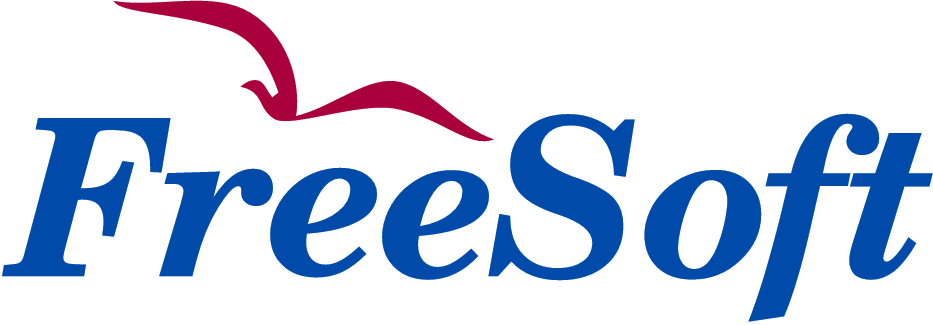Our general practice is to do the conversion of the application source code off-site at our premises to minimize travel costs, so our aim is to keep resources working on code conversion iterations at our offices. At predefined milestones of the project our consultants go on-site to work together with your and local partner’s team. We respect your security policies and rules for sending sources and data off-site, just let us know your preference!
Author Archives: Peter
What is the automation level of your solution?
The main concept behind our tools and services is to reach the highest possible level of automation so we try to eliminate any manual work on the converted source code base! Automation ensures uniform quality and unified syntax of the new code base, but most importantly it mitigates risk associated with time and cost of any enterprise software development and integration projects.
Please visit our methodology page for more information and also request a live demonstration so that we can show you how automated our technology is!
What software products, licences do I need after migration?
There is no specific need on our side to implement the converted application, so we don’t utilize any 3rd party components that would require additional licences. The migrated system only needs the standard system software of your target scenario e.g. operating system, database management system, application server and anything else you may define like schedulers, spooling, integration tools etc.
Are there any enhancements done to the original system by your solution?
Our code converter called CodeLiberator uses conversion rules and patterns that can be customized according to your needs during the project. Besides providing various options for different code syntax on the target side it also allows certain automated enhancements of the user interface and of the business logic as well. Contact us to discuss your needs and the options we can offer you!
Do you sell the product licences (COTS) of your tools or do you sell services?
We sell services and we have a reason to do so. We believe this is the only way we can guarantee that the end product of the project is a functional, productive system and not just a bunch of database and application components in intermediate state, still requiring a significant amount of resources and a long time to be properly implemented.
Please visit our methodology page for more information and also request a live demonstration so that we can show you how our tools work!
Do you provide us with data unload and load tools for data migration?
Besides automated data schema migration our framework fully supports data ETL (Extract-Transform-Load) processes during database migration. Generally our database migration tool called the DataLiberator uses the data extract or unload prepared by standard utilities of the legacy database systems. DataLiberator processes the unloaded data files to prepare data for the data load, and also generates the proper scripts for the DBA to load the data in a fully automated way. The data transformation and load processes are repeatable anytime by minimal effort, practically by launching the controller scripts provided by the tool.
Please visit our Tools page for further information on DataLiberator and other tools in our unique modernization framework.
Informix migration to Oracle and COBOL re-platforming

The client Sixt AG is the leading mobility service provider in Europe, available to customers at 3,500 service stations worldwide. FreeSoft as the prime contractor provided automated solutions for database and application migration and for bi-directional database synchronization in the project aiming to migrate the legacy database and the 4 million lines of code COBOL application from Informix to Oracle.
The Project
The goal of the project was to eliminate bottlenecks and performance issues with the company’s business-critical applications due to a non-scalable data infrastructure. The solution to this main issue was the transition to a new database infrastructure, and the migration of two core applications on multiple servers with 4 million code lines in three languages, 800 gigabytes of database volume, 1,200 tables, and numerous application servers. The final infrastructure optimized system availability so that Sixt can process vehicle queries and rentals 24 hours a day.
Solution
FreeSoft used its LiberatorWorkbench framework to deliver the project. The following products of the toolkit were used:
- KnowledgeLiberator for analyzing the Informix schema
- KnowledgeLiberator for analyzing the COBOL application
- KnowledgeLiberator for analyzing the C/C++ application
- DataLiberator for migrating the database schema to Oracle
- DataLiberator for data transformation and load
- CodeLiberator re-platforming the COBOL and C/C++ application to Oracle
- Data Propagator to synchronize data between 30.000 relational tables bi-directionally
Benefits realized by Sixt
- Created a highly scalable, reliable, and stable data infrastructure with Oracle Database and Oracle Real Application Clusters to support Sixt’s 24 hour-a-day vehicle rental business
- Ensured availability of business-critical applications, such as the online reservation system for booking rental cars, with no service interruptions even at peak loads
- Improved database response times by 70% and almost halved the system load after four months, with further performance augmentations in the pipeline
- Optimized scalability of the environment with Oracle Real Application Clusters to support future increases in the demand for rental cars
ISAM/Vision migration to Oracle and COBOL re-platforming

The client Dollar Thrifty Automotive Group (formerly NYSE: DTG) is one of the largest car rental groups with presence in more than 70 countries around the world. In the US, the client has more than 800 company-owned or franchised stores. With more than 1500 International locations, they are present at almost every major airport in the world. In November 2012, it was acquired by Hertz Global Holdings in a $2.3 billion deal.
The Project
Primary objective of the project was to migrate the business critical car reservation system’s flat file structures and data into Oracle RDBMS. The conversion was accomplished in three phases: migrating the legacy ISAM database to Oracle and automated re-platforming of the application; generating additional software components for the modified target architecture; testing and QA iterations.
The size of the original application was in the magnitude of approximately 124 ISAM data files (more environments: testing; production) and ca. 700,000 lines of code in COBOL.
Solution
The project was a complex technology and organizational migration process. FreeSoft provided DTG with the following services:
- Consulting to develop the concept and collect all details and sources of the application
- Extensive prototype
- ISAM data store normalization and migration
- COBOL re-platforming
- Unit test and integration test
- Bug tracking and fixing
- Training for IT Development Department
Benefits realized by DTG
- Get rid of the ISAM files and VISION data store technology
- Migrate and integrate data in a single enterprise Oracle data center
- Enabling strategic redesign activities in the new environment
Mainframe DB2 migration to Oracle and COBOL re-platforming

The client is a supermarket chain having stores in Northern California, Nevada, and New Mexico. FreeSoft as a technology provider and migration partner was involved as a subcontractor of leading RDBMS vendor of the world in Client’s Data Warehouse migration project.
The Project
Migration was necessary because of high maintenance cost and the obsolete technology and environment.
The original system was operating on an OS/390 machine based on IBM DB2. The database contained 1 TB data that was stored in hundreds of tables (most of them were partitioned). The ETL processes were mapped in Cobol programs and SQL procedures called from JCL.
The target of the project was to migrate the DB2 database schema to Oracle on open system, transform and load the data and finally re-platform the ETL processes.
Solution
FreeSoft utilized its LiberatorWorkbench framework to deliver the project. The following tools were used:
- KnowledgeLiberator for analyzing the DB2 schema and control files
- KnowledgeLiberator for analyzing the SQL procedures
- DataLiberator for converting the Oracle schema and SQL procedure, and generating scripting for data transform and load process
- CodeLiberator for COBOL re-platforming
Benefits realized by customer
- Retire DB2 on the mainframe, use only the Oracle database in the UNIX environment
- Cost savings
- Improved efficiency
SIXT

Horst Effenberger, IT manager:
“FreeSoft hat die enorm komplexe Aufgabenstellung sehr gut gelöst. Die Mitarbeiter waren bei uns im Haus tätig, was sicher wichtig für den Erfolg des Projektes war. So konnte in der Testphase beim Auftreten von Fehlern immer sehr schnell reagiert werden.”
Otto Würth, Head of IT, Leasing
“Our new data infrastructure, built on Oracle Database, helps us to design our vehicle leasing in an even more attractive way for our customers and continue to build on the mobility concepts we offer.”




 Eng
Eng 
 日本語
日本語 Br
Br De
De